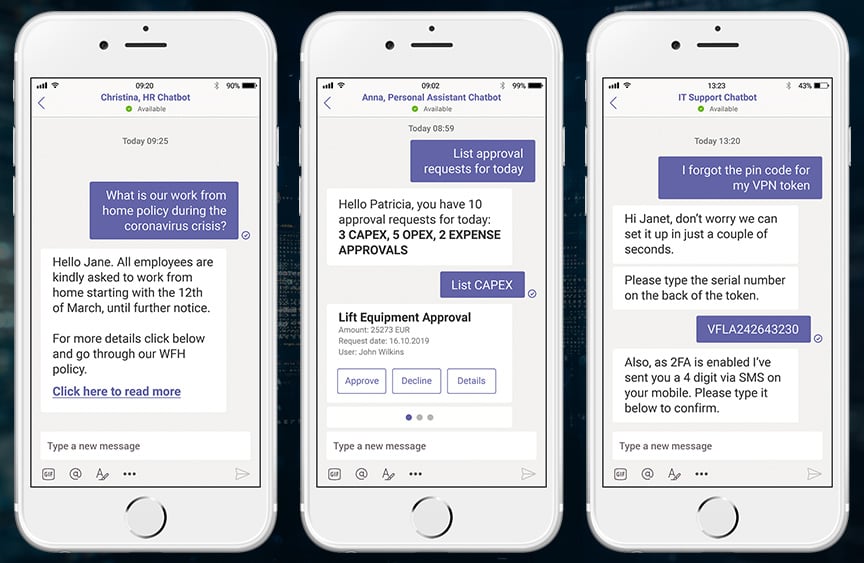Remote work, gig work, work-from-home; whatever you call it—it’s on the rise. And had been for some time already when the current Coronavirus (COVID-19) pandemic struck. There are many lessons being learned in the critical first few weeks of city lockdowns.
Thousands of people adopting new workflows has shown that not only can many more people than previously believed accomplish their tasks remotely; but with the right tools they can be even more productive.
Estimates are that ~⅓ of the American workforce can do at least the bulk of their job remotely. While that may not sound like much, based on current population numbers this means approximately 100 million people are working remotely (in just this one country) you start to see the potential.
And when you add in the people forced to work from home despite their roles not being optimal for that setup, you can see how our current situation is forcing solutions to be implemented that may not be optimal either. Here are our top takeaways from the Covid-19 enforced work-from-home (WFH) situation we hope can help you and your teams get through the present moment and maybe even come out the other side stronger.
The World Economy Has Never Been More Interconnected
As collaboration tools like Microsoft Teams* have changed the face of corporate meetings forever, chances are you were already conducting some percent of your meetings virtually.
Beyond the ease of scheduling meetings that span continents, eCommerce and the expansion of the global supply chain mean that most companies of any significant size are doing business across borders every day. This flattening of the supply chain brings with it untold gains for all supply chain partners, no matter their location. It also brings with it some potential pain points like we’re seeing now.
To overcome these pain points, companies working around the world should have policies and procedures in place and documented so that any employee who finds themselves needing remote access to a server (for example) can get it with a minimum of fuss. This will allow them to continue doing their job, no matter where in the world they find themselves, whether at a supplier site in South America or on their couch while working from home caring for a sick child.
* By the way, did you know that currently Microsoft is providing Teams for free? Grab yours here – microsoft.com/teams
Put Your People First
As you’ve likely already noticed, converting your workforce to remote isn’t as simple as turning to the office and declaring, “OK everybody, go home and work.” There will be a learning curve, as anytime you force people to change their workflow there are commensurate habit changes that become necessary. And those take time to settle in and become routines.
A general best practice to ease the transition while maintaining your bottom line that is often overlooked (and may be coming a bit late given the current scenario) is to set clear boundaries from day one.
Work-life balance is often the first casualty when people start working remotely, what with today’s always-on technology just a tap away on a smartphone. Establish “office hours” so everyone knows when they are expected to be available and when they can turn off and spend time with their family without the fear of an emergency email needed attending to. Lay out what acceptable communication channels are, then lead by example and use them yourself.
Document what expectations are in terms of work output. Is it fair to expect everyone to be at 100% capacity on day one? That’s for you to determine, however, in our experience, the answer is no. People need some time to create their new workflows, find the best place in their apartment to work from, etc. Giving them an allowance of time to get these things sorted out at the beginning will mean increased productivity down the line.
Conversational AI-driven Technology Is Ready To Provide A Needed Assist
Yes, it’s true that some of this work-from-home ability is down to the advancements made in consumer technology in the past few years. A decent internet connection and a laptop (or in some cases a mobile device) are all many people need to be effective at their jobs from just about anywhere.
From the corporate end, however, there are additional concerns mostly revolving around data access and security. For business continuity to be successful, at least a portion of your workforce will probably need to access proprietary company data during their workday. Do you have the infrastructure in place to make that happen?
Some additional considerations for the planning stages (it’s never too late to do an audit):
- Don’t assume everyone has high-speed internet available at home. Make concessions available in the form of mobile hotspots, reimbursing for data plan usage on personal cell phone plans, etc.
- Thoroughly document your Work from home policy and ensure that it is easily accessible for all employees, from anywhere. One way to do this is to have it included in your HR chatbot FAQs, as pictured below. The great thing is that DRUID can help you deploy such chatbots in just 7 days!
- Set up virtual private network (VPN) access for those who need to access proprietary data and ensure all stakeholders know how to use it and that it is mandatory for that access. If VPN proves to be too cumbersome to be deployed and configured on short notice, you can easily deploy conversational AI-powered chatbots that provide quick access to company data (reports, documents, etc.) through secured channels (like Microsoft Teams) or various two-factor authentication methods.
- Put in place appropriate collaboration tools, such as the Microsoft Office365 suite with Teams. Be sure these are accessible from outside the company network and that all remote employees know the company policy on their use.
Here’s a couple of examples of chatbots which provide the much needed content for your remote teams.

And speaking of the DRUID chatbots as a new way to streamline remote work, these combine the ease of use of a chat interface with the power of AI and deep learning to provide your remote workers with just about everything they need to be productive from afar.
The ready-made integrations with enterprise systems that the DRUID platform provides, allow your chatbot to securely access, process and deliver company data to authorized users, in any given deployment model – cloud, hybrid or the heavily-secured on-premise servers. Now all your employee has to do is ask the chatbot for the information they need, and the bot can retrieve it securely and deliver it in the needed format.
Want to see first-hand how DRUID AI solutions can help your team and business? Schedule a live demo with us, here.
Is Your Company Ready For The Remote Future?
While there are some stumbling blocks to work out, the remote workforce is here. The worldwide Coronavirus outbreak that we’re currently in the midst of has forced many companies to figure out policies and procedures to make this work in the short term. But companies should also be putting time and effort into establishing a firm corporate stance on remote work so that in the future they’ll be better able to weather storms like this.
In a best-case scenario, the company may find a happier workforce that comes out the other side more productive than ever.

